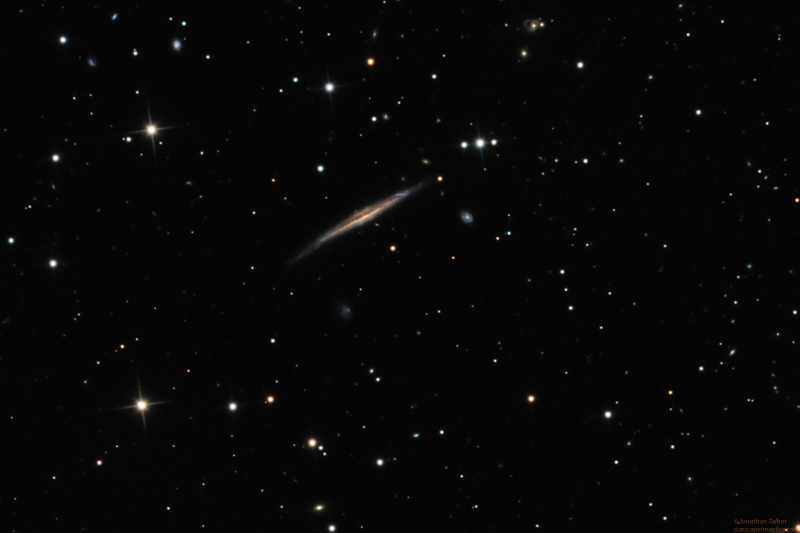
Larger size jpg images available here: 1920x1280 full res crop Full size: Entire image field Annotated image
Position of the faintest galaxy I could find in the image so far with a reference: SDSSJ141615.72+360739.6
NGC 5529 in Bootes
About this object
NGC 5529 is a spiral galaxy in the constellation Bootes. Its edge on to us so it looks like more of a thin disk. Its listed magnitude is 11.89 and lies at a distance of 150 million light years distant.
This image was taken with my 10” (250mm) f5 Astrograph. The image is comprised of 24.5hrs worth of Red, Green and Blue filtered images. Interestingly, there are many very faint galaxies in the image. The faintest I could find a reference to is magnitude 20.81 with a redshift of 0.368 meaning its probably close to 4 billion light years distant. There are others unlisted that look as faint or fainter so probably I was able to reach magnitude 21 or so which I think is incredible, especially for a 10” scope under suburban light pollution conditions.
NGC 5529 is a spiral galaxy in the constellation Bootes. Its edge on to us so it looks like more of a thin disk. Its listed magnitude is 11.89 and lies at a distance of 150 million light years distant.
This image was taken with my 10” (250mm) f5 Astrograph. The image is comprised of 24.5hrs worth of Red, Green and Blue filtered images. Interestingly, there are many very faint galaxies in the image. The faintest I could find a reference to is magnitude 20.81 with a redshift of 0.368 meaning its probably close to 4 billion light years distant. There are others unlisted that look as faint or fainter so probably I was able to reach magnitude 21 or so which I think is incredible, especially for a 10” scope under suburban light pollution conditions.
Image Details
- Optics : Home built 10” f5 Astrograph
- Mount: Paramount MYT
- Camera: QSI 583
- Filters: Astrodon 36mm RGB filters
- Exposure: RGB: 510:460:500 bin 1x1
- Camera/Mount Control: The Sky X, CCD Auto Pilot 5
- Guiding: SX Lodestar
- Processing: PixInsight 1.8
- Location: Stark Bayou Observatory, Ocean Springs, MS
- Date: March 2017




